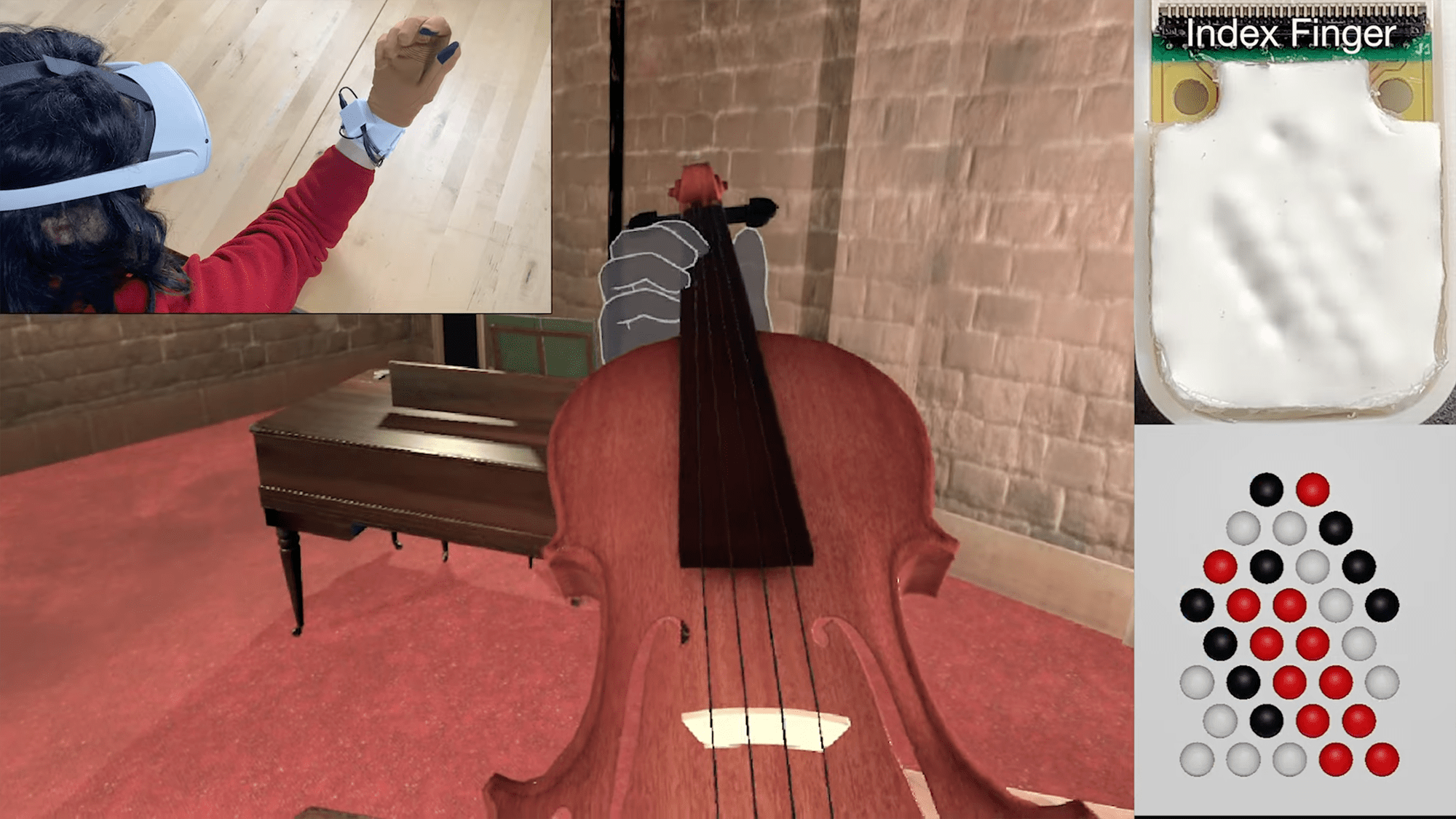

Virtual and augmented reality headsets are currently focused on visual experiences, but for a truly immersive environment, designers will need to integrate additional sensory inputs such as touch. Companies like Meta and HaptX are already testing iterations of VR/AR devices with haptic feedback support, but they currently remain clunky, heavy, and tethered to external power sources. There’s also the issue of price points: Meta’s Haptic Glove is estimated to cost around $15,000, while HaptX’s G1 sets owners back $6,000 alongside a $500 per month support fee.

But what if VR/AR systems could include a lightweight, form-fitting haptic glove that only requires lightweight batteries, all costing roughly two months’ of a G1 subscription? Fluid Reality is trying to make just such a device, well, a reality.
[Related: What’s the difference between VR and AR?]
The startup—spun out of the Future Interfaces Group at Carnegie Mellon University—unveiled their new device today, and hopes to offer a completely new approach to providing realistic haptic sensations for AR/VR environments. While many existing gloves rely on pneumatic designs to simulate touch, Fluid Reality’s wearable instead utilizes low-profile, self-contained motion-generating actuators that clip onto a user’s fingertips, all without the need for tubing or wiring connected to an external device. The entire array of components including a wireless controller, drive electronics, and rechargeable battery pack are strapped to the user’s hand and wrist, thus eliminating the need for a wired power source.

To simulate tactile sensations, the finger pads use liquid-like “pixels” powered by tiny electroosmotic valves—pumps controlled via the electric stimulation of fluid pressure and flow. The device is a solid state design, thus containing no moving components apart from the valve “pixels” themselves. Because each actuator is just 5mm thick, the pads are incredibly slim and far less bulky than existing haptic glove options.
In demonstration videos, wearers are shown manipulating 3D-simulated objects like a basketball, various shaped blocks, a water bottle, and a rock alongside the haptic finger clips’ responses. Depending on angle, pressure, and speed of movement, the electroosmotic-powered pixels can be seen inflating and deflating in realtime to approximate the real-life sensations.
Even with such seemingly precise responses, Fluid Reality’s prototype gloves are considerably smaller than options like the Meta Haptic Glove, both in terms of overall physical dimensions and pricing. According to the team, a Fluid Reality glove weighs less than half-a-pound, and could cost less than $1,000 per unit. In the designers’ research paper, the team concedes additional refinement is needed before the gloves can arrive on the market. Going forward, they hope to increase the density of haptic arrays on each finger pad, while also miniaturizing their drive electronics. Given humans’ entire hands are often employed in manipulating objects, Fluid Reality also wants future versions of the glove to include sensational abilities for regions such as the palms.
